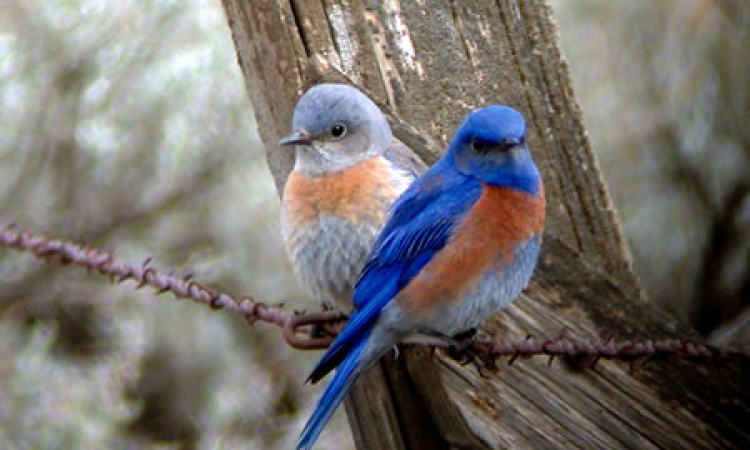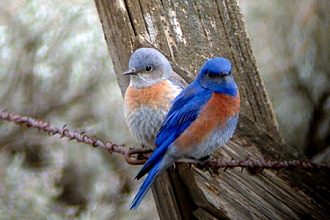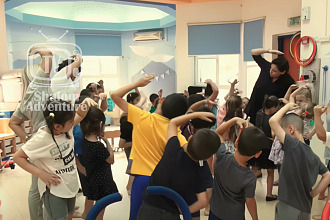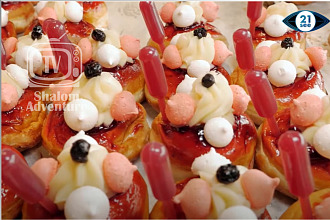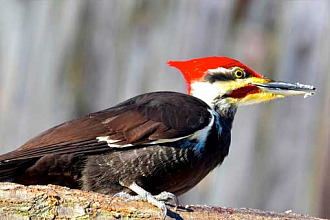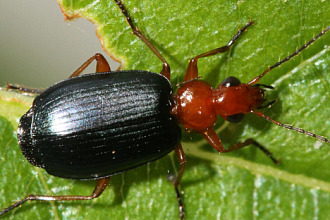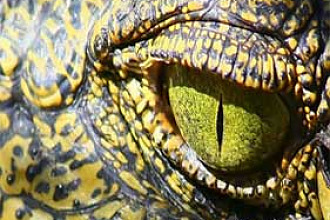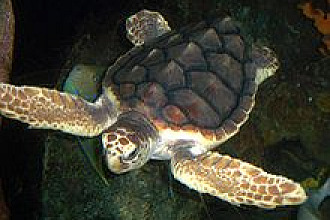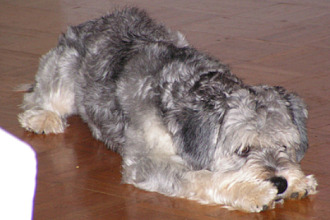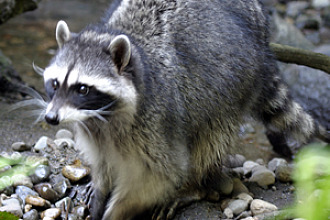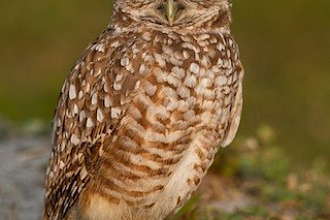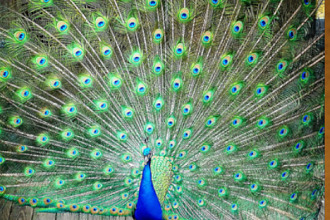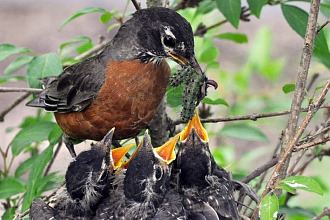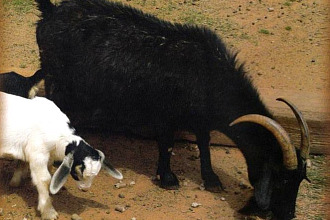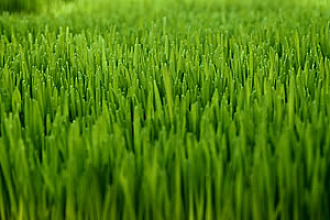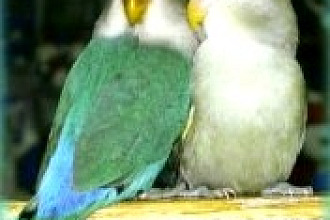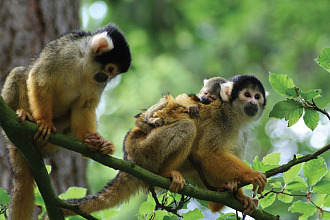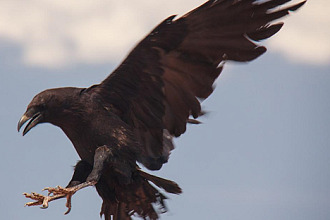There are all sorts of ways of getting attention. If you were a male bluebird and you found what you thought to be the perfect mate and also a wonderful spot for a nest, you would communicate what you had to offer by displaying blue. Not by accident, the bluebird has lots of that color! So—with his target audience in sight—he droops his tail feathers (lots of blue), droops his wings around himself (they're covered with brilliant blue) and drops his head. What the female sees is a mass of blue feathers. And she loves it—usually! But if that posture isn't enough, the male perches on the entrance to the cavity he's found in a tree (or bird box), and with his back to the female, he droops his feathers again and with his head inside the entrance, he rocks back and forth. Now surely she will see the mass of blue—which must be her favorite color—as he sways gently from side to side at the chosen site. She can't resist examining the locale. By the time she goes inside—and begins carrying in nesting material, it's basically a done deal.
Bluebird parents happily occupy second-hand hole/nests carefully bored out by other birds—probably woodpeckers—the previous year. (Woodpeckers are new-contractor fanatics—carefully head-hammering cavities in many locations so that others—like bluebirds—are quite content with the already-used woodpeckers' hollowed-out homes.) But a bluebird will usually not choose a home with a perch or branch close to the opening. It's another not-by accident bit of wisdom programmed into them by their super-wise Designer. Reason: these little birds are attacked often by other birds including sparrows and starlings who fly by looking for perches upon which to alight. They then drive away the smaller bluebirds, often actually destroying eggs and the adult parent. Only a Creator's wisdom placed within the parents would cause the bluebirds to seek cavities where there are no perches or branches nearby.
For 14 days a bluebird mother alone incubates the three to seven pale blue eggs she laid in her nest, and after they hatch she alone keeps her babies warm during their first week of life. Both mother and father bluebird understand this not by accident gender-specific assignment and behave accordingly. Why only the female bluebird? Because she alone was created with a bare patch of abdominal skin, called a "brood patch," which gives direct warmth from her body to the fragile eggs and then to the naked, just-hatched babies for the first seven days of their lives. By the eighth day the nestlings usually have enough feathers to keep warm at night, if for some reason the mother is not available further. The father bluebird, who is dedicated to the care of his babies, after those first 7 days, immediately participates directly in their care, providing protection and food (small soft insects) as long as needed.
The baby bluebirds grow quickly and eventually consume hard beetles and grasshoppers. By the time they are about 21 days old, it's time for the parents to stop feeding those babies. Mouths wide open, the young birds still call to their parents for MORE food. Not by accident the parents now ignore their babies' pleas. The parents perch on branches some distance away, calling to the young birds to come out. Finally, the first of the three-week old babies teeters on the edge of the entrance. Driven by its own hunger, and responding to the parents' call—the little bird will lunge forward and sometimes fly as far as 100 feet before grasping hold of a branch as it lands after its maiden air voyage. The others follow, and all manage to learn to study the area beneath them for items that meet their dietary requirements. The babies are well on their way to becoming welcome members of the world around them. These are sweet, timid birds that beautify the scenery and provide delicate music while they aid in controlling undesirable insect pests that would otherwise destroy food which we humans receive from the farming communities in our country.
Would to God all of us, like bluebirds, would communicate beauty while contributing to the good of the world around us!
"NOT BY ACCIDENT" (c) Juanita Kretschmar is used by permission and was first published in the book "Not By Accident 3 page 9
Picture originally found here

